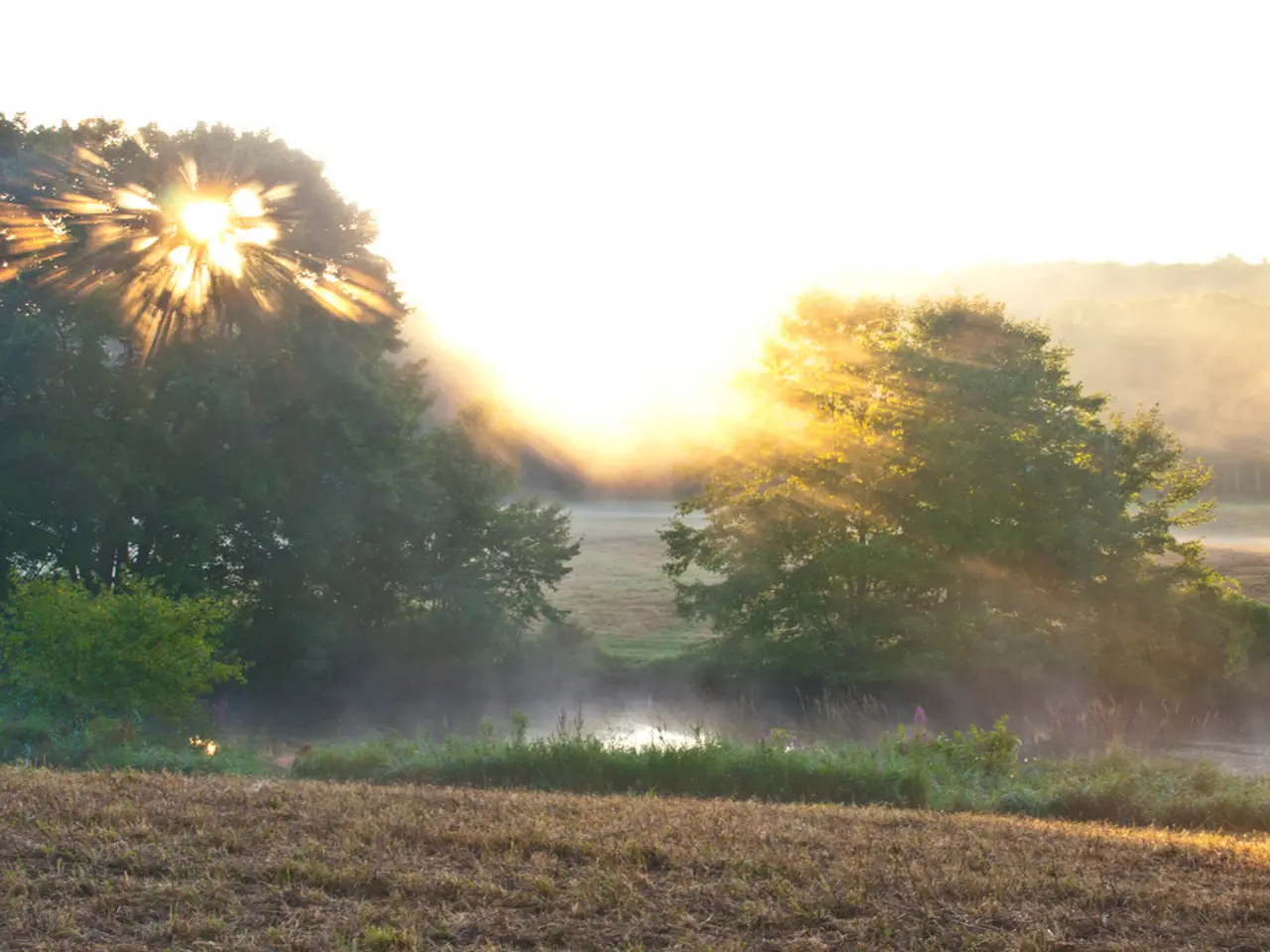Strategies for Gardening in Cold Climates During Shorter Growing Periods
In the heart of northern climates, gardeners are embracing a new approach to farming and gardening - cold climate permaculture. This innovative method focuses on designing landscapes that work harmoniously together, placing different elements in a way that makes the whole system better.
By choosing cold-hardy plants and adopting regenerative agriculture practices, gardeners and farmers are striving for more food security and climate resilience in these tough northern environments. Perennial gardens, a key feature of permaculture, are low-maintenance and long-lasting, stacking plants in time, space, and function.
One such project, a food forest, has been thriving on half an acre for five years. In the third year, the plants truly started to grow, offering a testament to the potential of this method in cold climates. Food forests, a great way to grow food in cold climates, use a mix of plants that grow all year, such as fruit trees and berry bushes.
By using no-till farming, cover cropping, and integrated livestock management, gardeners can improve their land's fertility and resilience. Polycultures, a mix of different crops, yield more and are less susceptible to disease and insect infestation compared to monocultures.
Cold climate permaculture strategies help gardeners and small farmers in cold areas make the most of their short growing seasons. Establishing food forests in cold climate regions offers a steady supply of nutritious foods, including a variety of perennial crops like fruit trees and berry bushes.
By choosing a variety of perennial crops for their gardens, gardeners can create productive, easy-to-care-for spaces. In cold climates, regenerative agriculture offers more than just better crops and water use, it opens up economic opportunities for farmers.
Effective techniques for extending the growing season in cold climate gardens include using protective structures such as cold frames, row covers, and cloches. Planting cool-season crops in late summer and practicing succession planting are also key methods. Together, these techniques enable gardeners in zones with short, cold seasons to extend harvest time, protect sensitive plants, and even attempt winter gardening outdoors.
Living sustainably in northern climates is not just possible but crucial. Adopting sustainable living strategies like energy-efficient homes, renewable energy, saving water, and managing waste is key to creating resilient, off-grid lifestyles that reduce environmental impact and increase self-sufficiency.
Understanding how plants, animals, and landscapes connect helps gardeners build resilient ecosystems, adding features like integrated systems, windbreaks, ponds, and grazing areas. Creating strong and self-sustaining ecosystems is key in cold climates, by integrating plants, animals, and landscapes.
Regenerative agriculture shines as a beacon of hope in cold climates, focusing on rebuilding soil health and restoring ecosystems. It fits well with cold climate permaculture, aiming to create sustainable food systems that work with nature.
Sources: [1] Cold Climate Permaculture [2] Farming in the Cold [3] The Winter Gardener [4] Cold Climate Gardening [5] Cold Climate Permaculture Institute
Read also:
- Long-Term Prescription Drug Impact on Brain Function
- Benefits, sources, and supplements for Vitamin D and its role in addressing osteoporosis
- Diabetes Management during Pregnancy: Keeping Tabs on Blood Sugar Levels and Lifestyle Adjustments
- Life Expectancy with Interstitial Cystitis: Exploration of Research, Treatment Methods, and Additional Information








